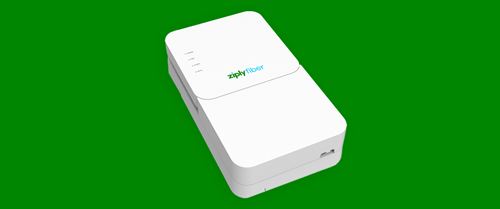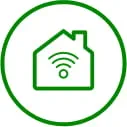Fiber-optic internet is quickly becoming a serious competitor to cable. Known for its ultra-fast, symmetrical speeds and always-on reliability, fiber internet is becoming highly desirable. From the rise of remote work to the popularity of online streaming and gaming, fiber internet allows for multiple devices to run at the same time with a low risk of slowdowns or lag. But how is it different, equipment-wise, from cable? One crucial component that makes fiber-optic internet work seamlessly is the ONT.
What does ONT stand for?
ONT stands for Optical Network Terminal. The name means what it basically sounds like: it’s a terminal for a fiber-optic network. The ONT is an interface that receives and sends data via pulses of light. When fiber internet is installed at your home or business, the ONT is the piece of equipment that connects the fiber-optic line coming from your service provider to your internal network.
How does an ONT work?
The ONT is responsible for converting the fiber-optic signal, which uses pulses of light, into an electrical signal. What’s even crazier is that once you set up your home WiFi, those electrical signals are transmitted via radio frequencies. Science!
ONT vs. modem: what’s the difference?
The ONT and the modem serve the same basic purpose. They are both small boxes installed inside or outside your home (often in a garage or basement) to bring your internet connection into your home. The internet line that is either attached to a utility pole or buried in the ground enters your home through a small hole and connects to the ONT or modem. The difference is what they’re converting and how.
- Modem: In traditional broadband internet, a modem is used to convert signals from coaxial, DSL, or cable lines into data your devices can understand. Cable uses copper to transmit data, as opposed to fiber, which uses light. DSL relies on the telephone line (which is also copper).
- ONT: In fiber-optic networks, the ONT performs a similar function but for fiber-optic signals. It converts light signals into data and transmits them via Ethernet to your router.
In short, if you’re using fiber internet, you don’t need a modem—your ONT does the job. But you will still need a router, which manages your IP address and internet traffic and allows you to connect your personal devices to the internet with WiFi. While fiber is usually faster and more reliable than cable connections, you may still need to set up WiFi extenders to get the most out of your fiber-optic connection.
Why is the ONT important for fiber internet?
The ONT is more than just a converter; it’s a critical part of your fiber-optic connection that impacts both the speed and quality of your internet experience. Here are the top benefits:
- Speed: Fiber internet offers some of the fastest speeds available. Ziply Fiber offers plans all the way up to 50 Gig – with equally fast uploads and downloads, something impossible in the cable industry. The ONT ensures that you can take full advantage of these speeds by translating fiber-optic signals efficiently.
- Reliability: The ONT is designed to work seamlessly with fiber-optic networks, which are inherently more stable and less prone to interference than traditional broadband networks. This ensures a more reliable internet connection.
- Scalability: As your internet needs grow, the ONT can easily accommodate faster speeds and more bandwidth without the need for a major hardware overhaul.
Getting started with fiber internet
Once you sign up for fiber internet, a technician with your ISP will come out to install the ONT as well as the router in your desired spot. Then he/she will check in with a network technician to activate the line. Once the ONT and router are up and running — it shouldn’t take more than 20-30 minutes if there are no complications — the technician can help you connect to WiFi or install WiFi extenders. The tech will also run a speed test before leaving to ensure you’re getting the upload and download speeds you signed up for. Note that once you’re away from the router and on WiFi, speeds will always slow down. To get the fastest speeds possible, you’ll want to plug your device into the router with an Ethernet cable.
In short, the ONT is fiber internet’s version of a modem. The pulses of light that comprise fiber-optic technology need a station to convert into electrical signals, which then connect to your laptops, tablets, phones, smart appliances — everything that connects to the internet, including the device you’re using to read this blog right now.






